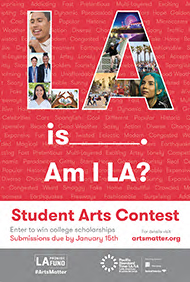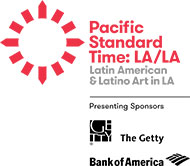OPENING THIS MONTH
| |
 Portrait of Gabriel Bernard de Rieux, 1739–1741, Maurice-Quentin de La Tour. Pastel and gouache on blue paper, mounted on canvas. The J. Paul Getty Museum
Portrait of Gabriel Bernard de Rieux, 1739–1741, Maurice-Quentin de La Tour. Pastel and gouache on blue paper, mounted on canvas. The J. Paul Getty Museum
|
Pastels in Pieces
January 16–July 29, 2018 | The Getty Center
Eighteenth-century pastellists joined together multiple sheets of paper, a practice that allowed them to cover their mistakes or paste the heads of important sitters onto the bodies of models. Matching each exhibited pastel with a map of its component sheets, this installation encourages visitors to consider how these objects were made.
Learn more »
| |
 Study of a Mourning Woman, about 1500–1505, Michelangelo Buonarroti. Pen and brown ink, heightened with white lead opaque watercolor. The J. Paul Getty Museum
Study of a Mourning Woman, about 1500–1505, Michelangelo Buonarroti. Pen and brown ink, heightened with white lead opaque watercolor. The J. Paul Getty Museum
|
Michelangelo to Degas: Major New Acquisitions
January 17–April 22, 2018 | The Getty Center
The Museum recently made one of the most spectacular acquisitions in its history, purchasing a collection of sixteen drawings by Michelangelo, Andrea del Sarto, Goya, Degas, and other masters. This exhibition presents the drawings together with an exquisite painting by Watteau,
La Surprise, acquired from the same celebrated collection.
Learn more »
| |
 Footed Fan-shaped Box, Edo period, late 17th–mid-18th century, artist unknown. Lacquer. Musée national des châteaux de Versailles et de Trianon. Photo: Thierry Ollivier. © RMN-Grand Palais/Art Resource, NY
Footed Fan-shaped Box, Edo period, late 17th–mid-18th century, artist unknown. Lacquer. Musée national des châteaux de Versailles et de Trianon. Photo: Thierry Ollivier. © RMN-Grand Palais/Art Resource, NY
|
A Queen's Treasure from Versailles: Marie-Antoinette's Japanese Lacquer
January 23, 2018–January 6, 2019 | The Getty Center
A Queen's Treasure brings to the Getty precious examples of Japanese lacquer from the personal collection of the French queen Marie-Antoinette (1755–1793). The elaborate and costly works reveal a fascinating aspect of the queen's personal taste and demonstrate the consistently high level of achievement attained by Japanese lacquer artists during the mid-Edo period.
Learn more »
| |
 Initial Q: David Before Saul (detail), after 1205, Master of the Ingeborg Psalter. Tempera colors and gold leaf on parchment. The J. Paul Getty Museum, Ms. 66 (99.MK.48), fol. 55
Initial Q: David Before Saul (detail), after 1205, Master of the Ingeborg Psalter. Tempera colors and gold leaf on parchment. The J. Paul Getty Museum, Ms. 66 (99.MK.48), fol. 55
|
Outcasts: Prejudice and Persecution in the Medieval World
January 30–April 8, 2018 | The Getty Center
Medieval manuscripts preserve stories of faith, romance, and knowledge, but their luxurious illuminations can reveal disturbing narratives as well. Often created for the privileged classes, such books nevertheless provide glimpses of the marginalized and powerless and reflect their tenuous places in society.
Learn more »
TALKS
| |
 Saint Jerome, about 1605–1606, Caravaggio. Oil on canvas. Ministero dei Beni e delle Attività Culturali e del Turismo-Galleria Borghese
Saint Jerome, about 1605–1606, Caravaggio. Oil on canvas. Ministero dei Beni e delle Attività Culturali e del Turismo-Galleria Borghese
|
Caravaggio: An Overview
Sunday, January 7, 3:00 p.m. | The Getty Center
Distinguished art historian Michael Fried, professor emeritus of humanities at Johns Hopkins University, takes off from each of the three great paintings on loan to the Getty Museum from the Galleria Borghese in Rome to provide an overview of Caravaggio's remarkable, world-transforming achievement.
Learn more about this free talk and get tickets »
There Will Be Food: Latin American Cuisine in L.A.
Tuesday, January 9, 7:30 p.m. | The Getty Center
Pulitzer Prize-winning food critic Jonathan Gold and multi-tasking food scholar and radio host Evan Kleiman lead a far-reaching and ambitious exploration of Latin American cuisine in dialogue with Los Angeles.
This talk is part of the initiative Pacific Standard Time: LA/LA.
Learn more about this free talk and get tickets »
| |
 Photo: John Linden
Photo: John Linden
|
Is Los Angeles Part of Latin America?
Tuesday, January 16, 7:30 p.m.
| The Getty Villa
As Pacific Standard Time: LA/LA, the unprecedented exploration of Latin American and Latino Art in Los Angeles, draws to a close, this panel asks: How Latin American is L.A. really? The city's modern roots are Midwestern, it has U.S.-style segregation, and it has little of the pan-American feel of Miami. Gregory Rodriguez of Zócalo Public Square moderates this panel with comedian and art collector Cheech Marin, Univision anchorperson León Krauze, and
New York Times national correspondent Jennifer Medina.
This talk is part of the initiative Pacific Standard Time: LA/LA.
Learn more about this free talk and get tickets »
| |
 Charles L. Knoedler (1863–1944), the youngest son of Michael Knoedler, at the gallery's fourth location, a rented brownstone at the intersection of 170 Fifth Avenue and 22nd Street in New York City. The Getty Research Institute, 2012.M.54
Charles L. Knoedler (1863–1944), the youngest son of Michael Knoedler, at the gallery's fourth location, a rented brownstone at the intersection of 170 Fifth Avenue and 22nd Street in New York City. The Getty Research Institute, 2012.M.54
|
Art Dealers, America and the International Art Market, 1880–1930
Thursday and Friday, January 18 and 19, 9:00 a.m.–5:45 p.m. | The Getty Center
The Getty Research Institute presents a symposium on the role of international art dealers in creating the collections, museums, and intellectual culture of the American art world in the late nineteenth and early twentieth centuries. Bringing together rich archival resources from the Getty Research Institute and peer institutions, and capitalizing on new methodologies made possible by the extraordinary quantity of information contained in the documentary record, this symposium illuminates the ways in which art dealers contributed to making America a prominent arena in the international art market, and their role in creating the major private collections that became the foundation of great American museums.
Learn more about this free talk and get tickets »
| |
 Lunar Typewriter, Master Version, 1977–78, Leandro Katz. Gelatin silver print. The J. Paul Getty Museum, Purchased with funds provided by the Photographs Council. © Leandro Katz
Lunar Typewriter, Master Version, 1977–78, Leandro Katz. Gelatin silver print. The J. Paul Getty Museum, Purchased with funds provided by the Photographs Council. © Leandro Katz
|
Beyond the Ordinary: A Conversation with Three Conceptual Artists from Argentina
Saturday, January 27, 4:00 p.m. | The Getty Center
During the 1960s and the 1970s, amid a tense political climate, the art scene in Argentina fostered a radical break with traditional forms, giving rise to conceptual practices. The unconventional artistic production of this period often involved the employment of photography in highly experimental ways. Three of the leading artists of this period—Carlos Ginzburg, Luis Pazos, and Leandro Katz—discuss their work and their experiences with Idurre Alonso, co-curator of the exhibition
Photography in Argentina, 1950–2010: Contradiction and Continuity.
This talk is part of the initiative Pacific Standard Time: LA/LA.
Learn more about this free talk and get tickets »
COURSES
Drawing from the Masters: Mark Making
Sundays, January 7 and 21, 3:30–5:30 p.m. | The Getty Center
Enjoy the tradition of sketching from original works of art every first and third Sunday of the month at the Getty Center. In January, explore the expressive potential of mark making to create value, form, and texture with artist Kaitlynn Redell. All experience levels welcome. Sign-up begins at 2:30 p.m. at the Information Desk. This is a free program.
Learn more about this free course »
| |
 Unknown, Miniature Skeleton, 25 B.C.–A.D. 100, Roman. Bronze. The J. Paul Getty Museum
Unknown, Miniature Skeleton, 25 B.C.–A.D. 100, Roman. Bronze. The J. Paul Getty Museum
|
Drawing from Antiquity: Take a Closer Look: Small Objects
Saturday, January 13, 11:00 a.m.–12:30 p.m.
| The Getty Villa
Some of the most beautiful objects in the Getty Villa's collection are also some of the smallest. In this workshop, explore small terracotta, bronze, and glass objects to discover their meaning, craftsmanship, and delicate beauty. Look closely and enjoy a drawing activity in the galleries.
Learn more about this free course and get tickets »
| |
 Tablet depicting lord grasping a cacao tree as a staff, 700–1100, Maya. Greenstone. Peabody Museum of Archaeology and Ethnology, Harvard University. Peabody Museum Expedition, 1907–1910. Image © President and Fellows of Harvard College, Peabody Museum of Archaeology and Ethnology, PM# 10-71-20/C7410, (digital file # 60741111)
Tablet depicting lord grasping a cacao tree as a staff, 700–1100, Maya. Greenstone. Peabody Museum of Archaeology and Ethnology, Harvard University. Peabody Museum Expedition, 1907–1910. Image © President and Fellows of Harvard College, Peabody Museum of Archaeology and Ethnology, PM# 10-71-20/C7410, (digital file # 60741111)
|
Cacao: The Story of Chocolate
Sunday, January 13, 11:00 a.m.–12:30 p.m. | The Getty Center
Talk and TastingDiscover the rich history of cacao from its origins as a frothy, bitter beverage prized by ancient Mesoamerican societies, through its introduction into the sixteenth century courts of Europe, and to the bean-to-bar craft traditions practiced in Los Angeles today. A panel of experts explores the global journey of cacao as well as the traditional practices and more modern inventions that inform the art of chocolate making. After the talk, indulge in the ancient flavors of cacao beverages, sample flights of artisanal chocolates, and enjoy chocolate-inspired desserts. Compliments the exhibition
Golden Kingdoms: Luxury and Legacy in the Ancient Americas.
Tickets $45 or $65 with wine/champagne/port pairing (21 and over for pairing option). Complimentary parking.
This event is part of the initiative Pacific Standard Time: LA/LA.
Learn more and get tickets »
FILM
| |
 Ivan Cardoso filming Hélio Oiticica for H.O. (1979). Courtesy of Ivan Cardoso
Ivan Cardoso filming Hélio Oiticica for H.O. (1979). Courtesy of Ivan Cardoso
|
After Concretism: Audiovisual Experiments in Brazil
Tuesday, January 30, 7:00 p.m. | The Getty Center
This showcase of music, films, and videos produced by Brazilian artists and filmmakers associated with Concretism and its aftermath explores the interdisciplinary aspects of the movement, and in particular, how the moving image served as an outlet for experimentation during the 1960s and 1970s. This program complements the Getty exhibition
Making Art Concrete: Works from Argentina and Brazil in the Colección Patricia Phelps de Cisneros.
This program is part of the initiative Pacific Standard Time: LA/LA.
Learn more about this free program and get tickets »
COMING SOON: VILLA PREMIERE PRESENTATION
| |
 Photograph by Hector Sandoval / Sandoval Media
Photograph by Hector Sandoval / Sandoval Media
|
SAPO Featuring Buyepongo
Fridays, February 2, 9, and 16, 8:00 p.m.; Saturdays, February 3, 10, and 24, 8:00 p.m.; Sundays February 4, 11, and 18, 4:00 p.m.
| The Getty Villa
Get your tickets now!Loosely based on Aristophanes's
The Frogs,
SAPO takes place in the mid-1970s' Latin music scene. It's a slithery world of mischief, deception, and slippery hippie lily pads where anything goes. Adapted and performed by Culture Clash.
Learn more and get tickets »
CLOSING THIS MONTH
| |
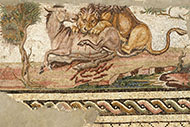 Lion Attacking an Onager, 150–200 AD, Hadrumetum, (now Tunisia). Stone and glass. The J. Paul Getty Museum
Lion Attacking an Onager, 150–200 AD, Hadrumetum, (now Tunisia). Stone and glass. The J. Paul Getty Museum
|
Roman Mosaics across the Empire
Through January 8, 2018
| The Getty Villa
The mosaics in this exhibition—dating from the second through the sixth centuries AD and recovered from Italy, North Africa, Southern France, Turkey, and Syria—provide a glimpse into the richly embellished architecture of the ancient world.
Learn more »
| |
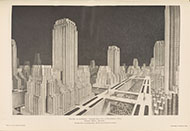 The City of the Future: Hundred Story City in Neo-American Style, 1929. Francisco Mujica (Mexican, 1899–1979). From Francisco Mujica, History of the Skyscraper (Paris: Archaeology & Architecture Press, 1929), pl. 134. The Getty Research Institute, 88-B34645
The City of the Future: Hundred Story City in Neo-American Style, 1929. Francisco Mujica (Mexican, 1899–1979). From Francisco Mujica, History of the Skyscraper (Paris: Archaeology & Architecture Press, 1929), pl. 134. The Getty Research Institute, 88-B34645
|
The Metropolis in Latin America,
1830–1930
Through January 7, 2018 | The Getty Center
Works in this exhibition depict the impact on major cities in Latin America of an emerging bourgeois elite, extensive infrastructure projects, and rapid industrialization and commercialization over the course of a century.
This exhibition is part of the initiative Pacific Standard Time: LA/LA.
Learn more »
| |
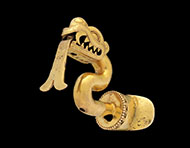 Serpent Labret with Articulated Tongue, 1300–1521, Aztec culture. Gold. The Metropolitan Museum of Art, purchase, 2015 Benefit Fund and Lila Acheson Wallace Gift, 2016 (2016.64). Image © The Metropolitan Museum of Art
Serpent Labret with Articulated Tongue, 1300–1521, Aztec culture. Gold. The Metropolitan Museum of Art, purchase, 2015 Benefit Fund and Lila Acheson Wallace Gift, 2016 (2016.64). Image © The Metropolitan Museum of Art
|
Golden Kingdoms: Luxury and Legacy in the Ancient Americas
Through January 28, 2018 | The Getty Center
This major international loan exhibition of more than 300 masterpieces traces the development of luxury arts in the Americas from about 1000 BC to the arrival of Europeans in the early sixteenth century.
This exhibition is part of the initiative Pacific Standard Time: LA/LA.
Learn more »
| |
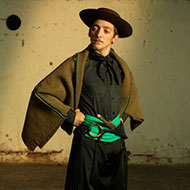 Malambistas I / Malambo Dancers I from Revista Barzón (Barzón Magazine), negative 2014; print 2016, Gustavo Di Mario. Chromogenic print. Courtesy of and © Gustavo Di Mario
Malambistas I / Malambo Dancers I from Revista Barzón (Barzón Magazine), negative 2014; print 2016, Gustavo Di Mario. Chromogenic print. Courtesy of and © Gustavo Di Mario
|
Photography in Argentina, 1850–2010: Contradiction and Continuity
Through January 28, 2018 | The Getty Center
Comprising 300 works by sixty artists, this exhibition examines the complexities of Argentina's history over 160 years, focusing on the creation of contradictory narratives and the role of photography in constructing them.
This exhibition is part of the initiative Pacific Standard Time: LA/LA.
Learn more »
PST: LA/LA Education Program Student Arts Contest
Ends January 15, 2018
Students from public middle schools and high schools in LA County are invited to enter the Student Arts Contest. Express yourself, win a college scholarship, or have your work displayed!
This contest is part of the initiative Pacific Standard Time: LA/LA.
Learn more and participate »
About PST: LA/LA
Pacific Standard Time: LA/LA is a far-reaching and ambitious exploration of Latin American and Latino art in dialogue with Los Angeles. Led by the Getty, Pacific Standard Time: LA/LA is the latest collaborative effort from arts institutions across Southern California.
Learn more and plan visits to institutions across the region »
CONTINUING ON VIEW
Sacred Landscapes: Nature in Renaissance Manuscripts
Through January 7, 2018
Learn more »
Giovanni Bellini: Landscapes of Faith in Renaissance VeniceThrough January 14, 2018
Learn more »
Making Art Concrete: Works from Argentina and Brazil in the Colección Patricia Phelps de CisnerosThrough February 11, 2018
Learn more »
Caravaggio: Masterpieces from the Galleria BorgheseThrough February 18, 2018
Learn more »
GETTY PATRON PROGRAM
Join the Getty Patron Program!
When we combine our efforts with your support, the result is extraordinary. As a Patron, you'll receive special benefits that will bring you closer than ever to the Getty.
Learn more about the Getty Patron Program »
FROM THE GETTY STORE
HANDCRAFTED CERAMICS
These distinctive handcrafted vessels are made in a small village in Nicaragua, nestled among volcanos and alongside a picturesque lagoon. The clay pots are thrown on a kick wheel to form the shape, painted using metal oxides, and then carved, sgraffito style, using homemade tools. The designs are interpretations by the artists from those of Aztec, Maya, Inca and other Pre-Columbian cultures. The purchase of these unique pieces helps support and grow the prosperity of the artists and their community.
Shop our Golden Kingdoms collection »
COMMUNITY PARTNER
Aquarium of the Pacific
CONNECT WITH US
 Download the Getty360 app now—your destination for music, theater, talks, & more!
Download the Getty360 app now—your destination for music, theater, talks, & more!
Follow us, learn about what we do, and tell us about your visit!
 Portrait of Gabriel Bernard de Rieux, 1739–1741, Maurice-Quentin de La Tour. Pastel and gouache on blue paper, mounted on canvas. The J. Paul Getty Museum
Portrait of Gabriel Bernard de Rieux, 1739–1741, Maurice-Quentin de La Tour. Pastel and gouache on blue paper, mounted on canvas. The J. Paul Getty Museum  Study of a Mourning Woman, about 1500–1505, Michelangelo Buonarroti. Pen and brown ink, heightened with white lead opaque watercolor. The J. Paul Getty Museum
Study of a Mourning Woman, about 1500–1505, Michelangelo Buonarroti. Pen and brown ink, heightened with white lead opaque watercolor. The J. Paul Getty Museum
 Initial Q: David Before Saul (detail), after 1205, Master of the Ingeborg Psalter. Tempera colors and gold leaf on parchment. The J. Paul Getty Museum, Ms. 66 (99.MK.48), fol. 55
Initial Q: David Before Saul (detail), after 1205, Master of the Ingeborg Psalter. Tempera colors and gold leaf on parchment. The J. Paul Getty Museum, Ms. 66 (99.MK.48), fol. 55

















